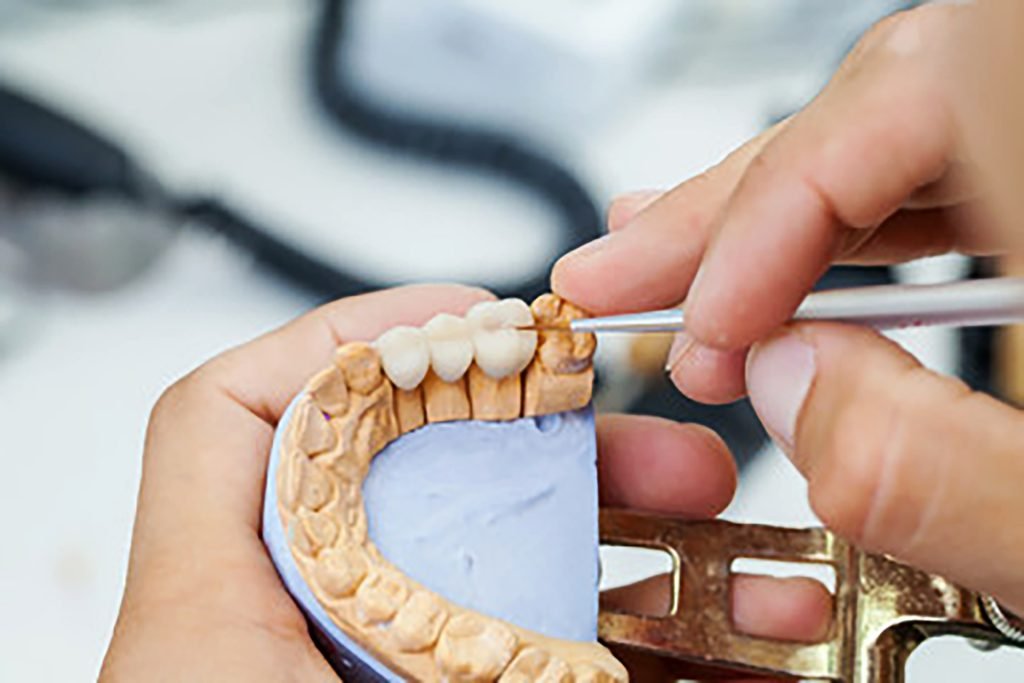Why Zirconia Crowns are Highly Recommended?

One of the challenges in dental restoration is to restore the functionality of teeth, which is essentially to grind and chew food for proper digestion. Over the years so many materials were discovered, tested and applied not just to regain the teeth grinding and chewing ability but also for easthetic purposes. Several materials with metal properties such as titanium, gold along with ceramics, porcelain and the likes have brought innovation in the field of dentistry. But up until recent years Zirconia crowns have gained popularity because of its notable aesthetic factor that mimics the look of natural teeth due to its translucent property. Zirconia materials has proven to have possessed a certain level of durability and strenght, albeit it was started being adopted and utilized as dental crowns since sometime in the late 90s. It exhibits superiority over its porcelain counterparts mainly because of the comfort it offers that is brought about by its being non-abrasive nature. What is Zirconia? Zirconia (zirconium dioxide) is a white, powdered metal oxide. It is made from zirconium, a metal with similar properties to titanium and is mined around the world. It is found in dinnerware and electrical fixtures, among other products. Zirconium makes an ideal choice for dental material, especially dental crowns, because it is chemically unreactive, and its toughness fitted most in posterior area where higher strenght is required to masticate food. Zirconia’s inherent white color and high hardness, high fracture toughness (difficult to crack) properties make an ideal choice for dental crown materials. Some of its beneficial qualities are resistance to wear, resistance to oxidation, no chemical corrosion and its translucent appearance when sintered (baked). What are the benefits of Zirconia crowns? Strength Zirconia crowns have an extremely high flexural and tensile strength. Upon being subjected through rigorous laboratory testing, zirconia crowns yeild a higher percentage of bending strength than porcelain. It has an innate capacity to better withstand the normal wear and tear on teeth from grinding and chewing. Thus, restoring the functionality of teeth closest to the original state. Durability Because of its natural strength and durability, Zirconia crowns generally last longer than its counterparts. Its being non-porous in nature makes Zirconia crowns more resistant to chipping, cracking and staining. Cosmetics The natural white color of zirconium material and its translucent microstructure properties have the ability to match the shade of the original teeth, and are optimized by technology and executed by highly skilled technicians in fabrication process. The final product exhibits an elegant, custom-crafted Zirconia crowns, engineered to seamlessly integrate into your smile. Comfort Due to the non-abrasive nature of the material, Zirconia crowns offer a superior level of comfort. The product has a smooth exterior surface, which prevents abrasion to surrounding teeth and gum tissue. Abrasive materials produce frictions in the course of its function that may cause damage to the surrounding teeth and soft tissues. To find out if Zirconia crowns are the best choice for you? You may call/text (02) 921-1729, 0918-4008899, 0917-9685003 or click this link (Book An Appointment) to book an appointment and avail your complementary consult.
Understanding the Interconnectedness of Mental Health, Smoking, and Oral Health

The relationship between mental health, smoking, and oral health is multifaceted, with each aspect influencing and exacerbating the others. This interconnectedness underscores the need for comprehensive approaches to healthcare that address these interrelated issues. Mental Health and Smoking The link between mental health conditions and smoking behavior is well-documented. Many individuals turn to smoking as a coping mechanism to alleviate symptoms of anxiety, depression, and stress. Nicotine, the addictive component of cigarettes, provides temporary relief from psychological distress, perpetuating a cycle of dependence. Consequently, individuals with mental health disorders are more likely to smoke, leading to adverse health outcomes. Smoking and Oral Health The detrimental effects of smoking on oral health are numerous and severe. Smoking is a significant risk factor for gum disease, tooth decay, and oral cancer. The chemicals in tobacco smoke interfere with the normal function of gum tissue, leading to inflammation and infection. Additionally, smoking inhibits saliva production, which plays a crucial role in protecting teeth and gums from decay and disease. Mental Health and Oral Health The relationship between mental health and oral health is bidirectional. Mental health disorders can contribute to poor oral health outcomes, as individuals may neglect oral hygiene practices due to symptoms such as fatigue, apathy, or impaired cognitive function. Conversely, poor oral health can exacerbate mental health challenges, leading to feelings of low self-esteem and social isolation. Addressing the Interconnected Issues To effectively address the interconnected issues of mental health, smoking, and oral health, holistic approaches to healthcare are essential. Integrated interventions that consider the interplay between these factors are needed to promote overall well-being. This includes providing access to mental health services, smoking cessation programs, and oral health promotion efforts. Public health initiatives aimed at reducing smoking rates and promoting oral hygiene should prioritize vulnerable populations and address underlying social determinants of health. Conclusion Understanding the interconnectedness of mental health, smoking, and oral health is crucial for promoting comprehensive health and well-being. By addressing these interrelated issues through integrated interventions and systemic reforms, we can improve health outcomes and enhance the quality of life for individuals and communities alike.

